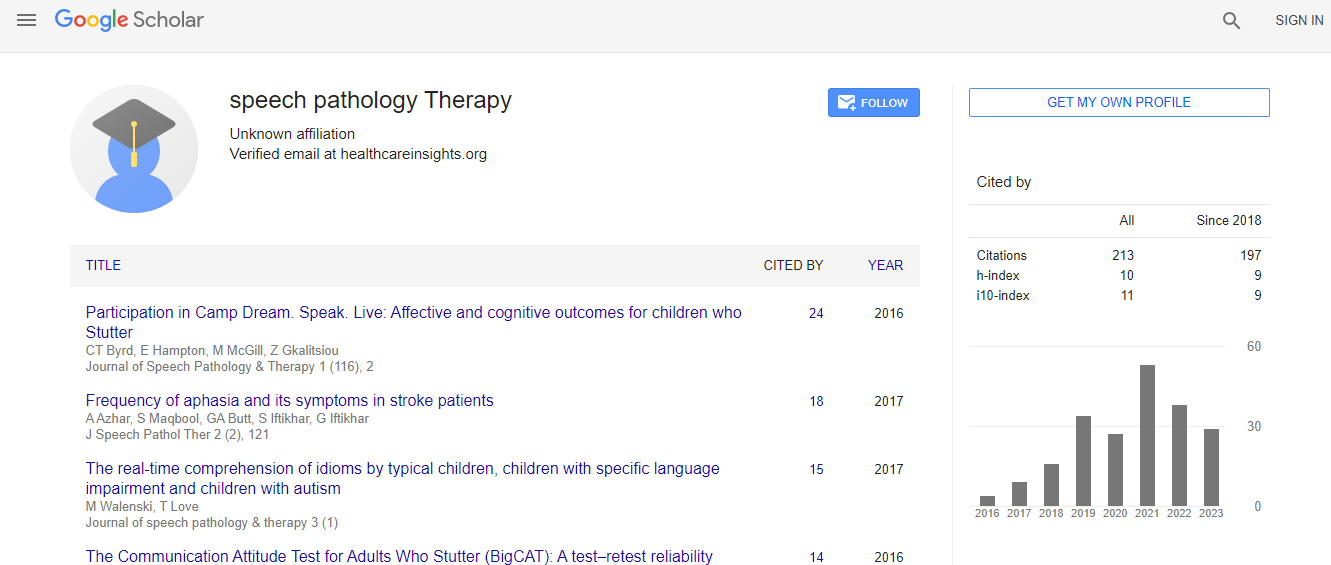ENT 2019: Discourse creation capacities of 4-to 5-year-old youngsters with and without a past filled with late talking: The precarious tyrannosaurus
*Corresponding Author:
Copyright: © 2020 . This is an open-access article distributed under the terms of the Creative Commons Attribution License, which permits unrestricted use, distribution, and reproduction in any medium, provided the original author and source are credited.
Abstract
Research on the discourse creation capacities of youngsters with a past filled with late talking (HLT) is restricted. We contrasted 4-with 5-year-old kids with and without a HLT on a standard discourse appraisal and a solitary word polysyllable evaluation. Strategy: The two discourse appraisals were directed to 13 kids with a HLT (4;4–5;9 years) and 11 kids with a background marked by run of the mill advancement (HTD) (4;1–5;10 years). Information were broke down utilizing spellbinding and inferential measurements. Result: The HLT bunch had essentially more unfortunate discourse exactness than the HTD bunch on both the standard discourse and polysyllable evaluations. The HLT bunch additionally demonstrated a fundamentally higher rate event of consonant oversights on both discourse appraisals contrasted with the HTD gathering. Clear investigation of members’ polysyllable creations demonstrated that the HLT bunch indicated a higher rate event of a scope of blunder types contrasted with the HTD gathering. End: By 4–5 years old, kids who were late to talk had discourse creation capacities that were essentially less fortunate than their friends who were not late to talk, proposing kept basic contrasts.
 Spanish
Spanish  Chinese
Chinese  Russian
Russian  German
German  French
French  Japanese
Japanese  Portuguese
Portuguese  Hindi
Hindi 